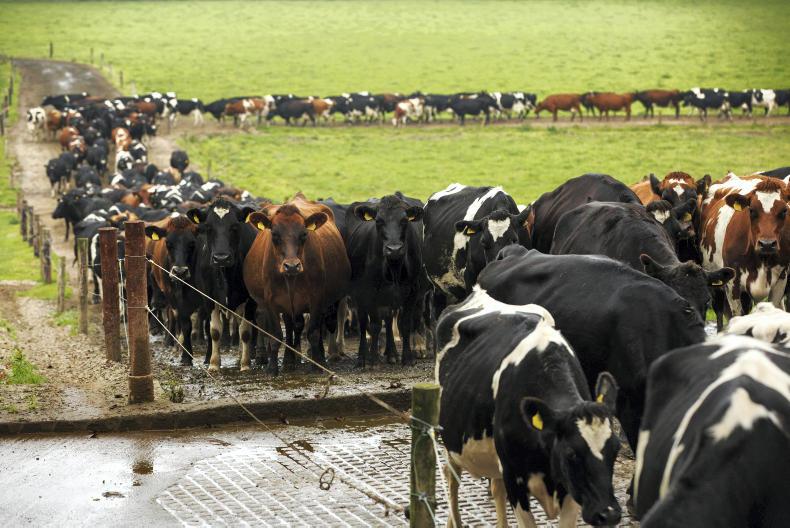Reports from vets suggest that rumen fluke is a big problem this year after a wet autumn.
Rumen fluke larvae use the common snail as a host after hatching from eggs in dung. The snails then leave trails on grass which is eaten by cattle.
Larvae then grow in the small intestine, causing scour and weight loss. Adult larvae make their way into the rumen, lay eggs and the cycle continues.
The symptoms are rapid weight loss, severe watery scour and in some cases swelling under the jaw of the animal.
Animals that have been grazing wet fields are most at risk so dosing for rumen fluke and liver fluke is advisable this autumn.
Treatment
There is only one active ingredient found to be effective against rumen fluke – oxyclozanide.
So to prevent resistance it should only be used in the event of an outbreak or if the risk is very high. Oxyclozanide is not effective against immature liver fluke so if using that to cover both types of fluke you will need to dose animals two if not three times this winter, depending on exposure.
Lameness
I’m hearing lots and lots of reports of lame cows where herds are still out grazing.
Keep an eye on cows to spot them at the early stage of lameness and get them seen to quickly.
If incidences are high, consider making a bunch of lame cows and put them on once-a-day milking, graze them near the yard, or dry them off.
Read more
Famers urged to test for rumen fluke
Vet's corner: don't let lameness hobble you
Reports from vets suggest that rumen fluke is a big problem this year after a wet autumn.
Rumen fluke larvae use the common snail as a host after hatching from eggs in dung. The snails then leave trails on grass which is eaten by cattle.
Larvae then grow in the small intestine, causing scour and weight loss. Adult larvae make their way into the rumen, lay eggs and the cycle continues.
The symptoms are rapid weight loss, severe watery scour and in some cases swelling under the jaw of the animal.
Animals that have been grazing wet fields are most at risk so dosing for rumen fluke and liver fluke is advisable this autumn.
Treatment
There is only one active ingredient found to be effective against rumen fluke – oxyclozanide.
So to prevent resistance it should only be used in the event of an outbreak or if the risk is very high. Oxyclozanide is not effective against immature liver fluke so if using that to cover both types of fluke you will need to dose animals two if not three times this winter, depending on exposure.
Lameness
I’m hearing lots and lots of reports of lame cows where herds are still out grazing.
Keep an eye on cows to spot them at the early stage of lameness and get them seen to quickly.
If incidences are high, consider making a bunch of lame cows and put them on once-a-day milking, graze them near the yard, or dry them off.
Read more
Famers urged to test for rumen fluke
Vet's corner: don't let lameness hobble you






 This is a subscriber-only article
This is a subscriber-only article










SHARING OPTIONS: